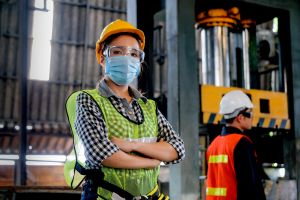
A few years ago I attended an Ergonomics conference where one of the presenters showed a picture of a person at a workstation that was not correctly designed, and blamed the person for the non-neutral work posture that resulted. The speaker adhered to an “employee capacity only” belief, and those of us who believe in a balance between that and the demands of the job were effectively shunned during the session.


Often employees must contort their bodies to work, and no amount of spending on “proper lifting training,” “movement analysis,” constant therapy, or “wearables” is going to address the underlying root cause of poor job design. Nor will it appreciably reduce the risk for soft tissue injuries and illnesses. There are not many “quick fixes” in our science, but I frequently see “ergonomists” peddling them. It is why we have an Effective Industrial Ergonomics Course.

Our approach is to balance capacity and demands. Our course and our assessment approach work well together with this balance. There’s also a place for the right kind of training, and we have had really good success with customized and targeted stretching programs. But the best success has been to merge the right type of training with improvements in job, process, equipment and tool design.
For example, I can give a training class every day for a year to the same people, and tell them to avoid stepping into a sinkhole. But until and unless I fill-in that sinkhole from a design standpoint, if the lights go out and everyone is told to quickly leave the area, someone is still probably going to fall in!
My job is to help reduce the discomfort and the potential for injuries that affected employees would otherwise still face.
Training and therapies are not going to fix the fact that boxes of supplies are always stored on the floor, or that the reach into an assembly fixture is 25-inches. Ergonomics is about addressing these kinds of issues via Prevention through Design (PtD), as laid out in ISO 45001. This is where leading companies are going, and the direction the science of Ergonomics should continue to take.
Contact us directly via this link to schedule an ergonomics assessment today, email us at info@qp3ergosystems, or call (847) 921-3113.
